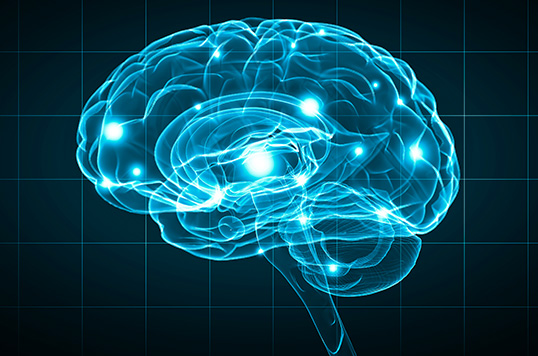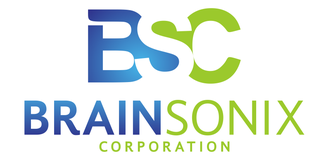
Research
Neuromodulation has become increasingly relevant to clinical research with the recent approval by the Food and Drug Administration of Deep Brain Stimulation (DBS), vagus nerve stimulation, and repetitive transcranial magnetic stimulation (rTMS). However, these techniques have significant drawbacks because they either lack special specificity and depth or are invasive with cumbersome maintenance.
Using a new brain stimulation method called Low-Intensity Focused Ultrasound Pulsation (LIFUP), we now have the ability to utilize ultrasound to focus non-invasively through the skull anywhere within the brain, together with concurrent imaging techniques.
The following research articles provide an overview of our progress thus far:

EARLY WORK ON LIFUP

Although the first attempts to study the effect of ultrasound (US) on neuronal tissue began nearly 80 years ago, systematic scientific exploration of this field did not start until the 1950s. At that time, several articles, in different languages, described the effect of US on neuronal tissues, with the most relevant English language articles arising from Fry’s laboratory. The studies demonstrated that US could induce reversible physiologic effects on nervous tissue, which ranging from increased activity to reversible suppression of visual evoked potentials. Notably, Fry’s studies documented both excitation and inhibition of neuronal tissue without concomitant histologic changes in the sonicated area.
Between 1960 and 1990, only a few papers were published on this topic. Much of the data came from the laboratory of Gavrilov in Moscow. These reports showed that focused ultrasound (FUS), in both humans and animals, was capable of stimulating inner ear structures, as well as the auditory nerve directly. With respect to safety, these studies further documented reversible neuromodulation with US, without observable damage of neuronal tissue. Several other laboratories, also exploring the effects of US on neuronal tissue, found similar results. All of the above studies found reversible enhancement, or depression, of neuronal activity in brain slices or in peripheral nerves of animals and humans without histologic findings characteristic of thermal damage or cavitation.
The 1990s saw an increased interest in the use of FUS for several practical applications: use of high-intensity focused ultrasound (HIFU) for ablation, stroke thrombolysis, and peripheral nerve blocking. Interest increased with the discovery that FUS can be used also to open the blood brain barrier (BBB), and deliver drugs to the brain focally. Disrupting the BBB with US could be done with or without use of a contrast agent that enhances cavitation at lower power of ultrasonic application. Disruption of the BBB at lower powers was usually reversible, and accompanied only by minimal evidence for apoptosis and ischemia. Although disruption of the BBB opens another chapter in direct drug delivery to specific areas within the brain a full review of this topic is beyond the scope of this manuscript. Low-energy FUS has also been effective therapeutically for accelerating fracture-healing time in bone. However, functional modulation of brain activity remains one of the most interesting possible applications of FUS.
RECENT EXPERIMENTAL LITERATURE
The last decade has seen an increased interest in research on the neuromodulating properties of LIFUP. With advancements in multi-array transcranial transmission of US and real time functional imaging for guidance, the possibility of LIFUP for human brain mapping is approaching rapidly. Tsui found US parameters that led to modulation of action potentials in peripheral nerves. Shorter duration pulses of US seem to activate, whereas longer pulses seem to inhibit, the amplitude and velocity of action potentials. A recent publication by a University of Arizona group not only confirmed reports of LIFUP induced neuromodulation in mouse hippocampal preparations, but also offered insight into possible mechanisms of this effect, such as influencing voltage gated sodium and calcium channels. Later, a paper by the same group described for the first time neuromodulation using US pulsation in vivo in the motor cortex of mice. Using LIFUP focused on motor cortex, they were able to evoke movements of the paws during transcranial stimulation. In this same report, when focusing LIFUP on the hippocampus, they were able to increase spike activity in CA1. In both cases, they found no evidence of BBB disruption or apoptosis.
Several studies on modulation of nerve conduction by FUS were recently reported from the Brigham and Women’s Hospital, Harvard Medical School. In a recent paper, Colucci et al. investigated the safety thresholds for conductivity suppression using LIFUP in sciatica nerve of bullfrogs. The authors determined that stimulation of the nerve with FUP could suppress conductivity reversibly for up to 45 minutes. Some of the effects were found to be thermally mediated, and some could not be explained by the thermal suppression. Specifically, non-thermal effects were present with low frequency sanitation (650 kHz). Yoo et al. investigated low intensity for an in vivo real time functional MRI (rtfMRI) neuromodulation study in rabbits. LIFUP caused observable changes in the blood oxygenation level dependent (BOLD) fMRI signal, but did not interfere with the recording. Both activation and suppression of the BOLD signal could be achieved by varying FUS pulse parameters. Visual cortex responses to strobe light stimulation could be suppressed reversibly for up to 11 minutes without causing BBB or tissue damage on postmortem histologic analysis.
Since then, the Brigham and Women’s Hospital group have confirmed BOLD signal suppression using EEG visual evoked potentials (VEP), and studied the suppression effect on epileptic seizures. The rat pentylenetetrazol (PTZ) seizure model was used, wherein the rats were injected with PTZ and then underwent the LIFUP stimulation to suppress the seizures. The results from a study of 30 animals reveal that low-intensity, pulsed FUS sanitation suppressed the number of epileptic signal bursts observed in EEG recordings after the induction of acute epilepsy via intraperitoneal injection of PTZ. These finding suggest a potential role for LIFUP in the treatment of epilepsy, but this has not yet been tested in human experiments.
In our research we also identified both excitatory and inhibitory sanitation parameters, which we successfully used in vivo in rabbits and rats. In addition to our in vivo research, Tyler and his group at the University of Arizona demonstrated activation in vivo in mice. This group also elucidated possible mechanisms of the LIFUP effect on neuronal tissue. However, much more work needs to be done.
PROGRESSION TO HUMAN TRIALS
Our experiments demonstrated that this technology could be used simultaneously with fMRI and navigated by MRI. Most of the scientific literature agrees that FUS does not damage tissue unless excess thermal effects are present, so low-intensity FUS (i.e. LIFUP) appears quite safe. For example, in one of our recent studies we were able to measure temperature in the focus of LIFUP during stimulation. We did not find any temperature elevation, even when using prolonged stimulation. Given the evidence of LIFUP’s neuromodulation capabilities without tissue damage, BrainSonix helped spearhead the effort to study LIFUP in humans.
To date, LIFUP experciments in humans have safely demonstrated a variety of neuromodulatory effects. For example, LIFUP targeted on the hand area of the somatosensory cortex has been shown to elicit both tactile sensations in the contralateral hand and relevant EEG evoked-potentials. Other studies have shown that LIFUP can decrease the amplitude of stimulus-evoked potentials and alter the dynamics of intrinsic EEG activity. Therefore LIFUP not only is capable of modulating brain electrical activity but can affect perceptions and behavior as well.
Given the safety profile of LIFUP along with demonstrated capacity for noninvasive neuromodulation in the human brain, the opportunity to use LIFUP as a research and therapeutic tool are enormous. Here are a few of the applications currently being studied using BrainSonix’s LIFUP technology:
-Treatment of disorders of consciousness by targeting the thalamus to see if LIFUP can facilitate recovery from a minimally-conscious state.
-Sonicating the amygdala to better understand and treat anxiety disorders and PTSD
-Studying the safety of neuromodulation in patients with temporal lobe epilepsy by targeting the temporal lobe with LIFUP
-Reducing pain with LIFUP targeted at the thalamus
-Stimulating the ventral capsule/ventral striatum as a treatment for OCD
FUTURE APPLICATION: BRAIN MAPPING AND THERAPEUTIC POTENTIAL
LIFUP combined with fMRI could potentially be used for brain-mapping paradigms that help identify and diagnose functional disorders of the brain that currently lack clear neuronal underpinnings. For example, research into bipolar and unipolar depression, OCD, autism, and others could benefit from these studies. Treatment of neurologic disorders such as chronic pain, obesity, and Parkinson’s might be possible via LIFUP induced neuroinhibition, as it may reach deep brain areas non-invasively. Pain, obesity, epilepsy, OCD, and other mental disorders, Parkinson’s, and other movement disorders, that is, the therapeutic areas where DBS has shown some promise all may be treatable with LIFUP.
Therapy with LIFUP may find a niche between medication treatments (which are still most convenient) and invasive strategies (i.e., ablation and DBS) that should be reserved for the most severe conditions that require permanent disruption or attenuation of neuronal circuitry. The unique properties of the LIFUP, which include noninvasiveness, small focus, and real time feedback from fMRI imaging could provide us with better understanding of brain function and better targeted treatment of mental and neurologic disorders.
FUTURE APPLICATION: BRAIN MAPPING AND THERAPEUTIC POTENTIAL
Focused US, combined with rtfMRI, could potentially be used for brain mapping paradigms that help identify and diagnose functional disorders of the brain that currently lack clear neuronal underpinnings. For example, bipolar mania, OCD, depression, autism, and others could benefit from these studies. Treatment of neurologic disorders such as chronic pain, obesity, and Parkinson’s might be possible via LIFUP induced neuroinhibition, as it may reach deep brain areas non invasively. Pain, obesity, epilepsy, OCD, and other mental disorders, Parkinson’s, and other movement disorders, that is, the therapeutic areas where DBS has shown some promise all may be treatable with LIFUP.
.
Therapy with LIFUP may find a niche between medication treatments (which are still most convenient) and invasive strategies (i.e., ablation and DBS) that should be reserved for the most severe conditions that require permanent disruption or attenuation of neuronal circuitry. The unique properties of the LIFUP, which include noninvasiveness, small focus, and real time feedback from fMRI imaging could provide us with better understanding of brain function and better targeted treatment of mental and neurologic disorders.
.
NOTE: Please reference “A review of low-intensity focused ultrasound pulsation” published in Brain Stimulation Journal (July 2011) for the complete article including citations.
